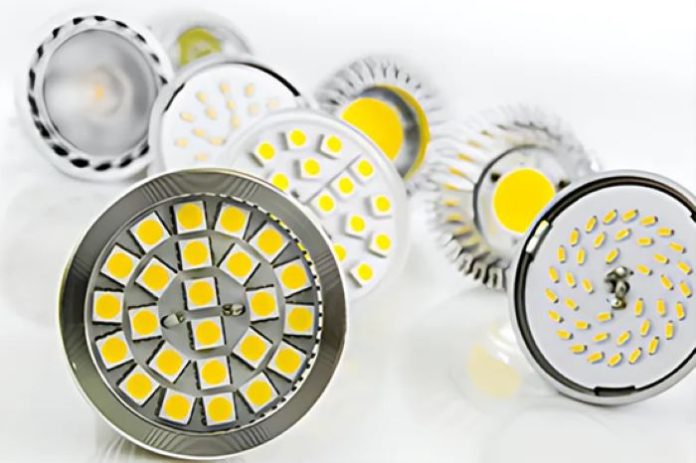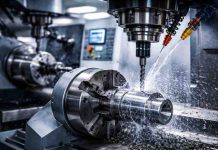We all love high-power LEDs for their brightness and efficiency, but they come with a dirty secret: heat. While they are massive upgrades over old-school incandescent bulbs, they still generate a significant thermal penalty. In fact, roughly 70% of the energy you feed into an LED turns into heat rather than light. If you don’t wick that thermal energy away fast enough, the temperature at the LED junction spikes quickly.
The consequences of this heat buildup are brutal. Efficiency plummets, color output shifts, and the lifespan of your product takes a nosedive. This makes thermal management the single most critical aspect of your design, especially for multi-LED arrays or high-intensity spotlights. In these high-stakes applications, the printed circuit board can’t just be a passive support structure; it has to act as the primary cooling element to keep the system alive.
So, how do we solve this? The industry standard has shifted toward ceramic PCBs built on robust materials like alumina or aluminum nitride. These specialized substrates are designed specifically to handle high thermal loads. Let’s look at why they have become the go-to solution for keeping junction temperatures down and reliability up.
Table of contents
The Thermal Bottleneck in Standard Boards
To understand why we need ceramics, we have to look at where standard materials fail.
When heat accumulates in an LED package, the junction temperature soars. This is dangerous territory. Engineers know that to guarantee the intended lifetime of an LED, you must keep the junction and phosphor temperatures within a safe “Goldilocks” zone. Excessive heat degrades the phosphor and causes early device failure.
The problem is usually the path of least resistance. In high-density designs—imagine a cluster of bright chips pumping out watts of energy in a few square millimeters—that heat needs a fast exit route. Standard FR4 fiberglass is a bottleneck. It’s an electrical insulator, but it’s also a thermal insulator. Even Metal Core PCBs, which use an aluminum base, have limitations due to the dielectric layer sitting between the heat source and the metal.
This is where ceramic substrates change the game. By removing the thermally resistive dielectric layer found in MCPCBs, ceramic boards create a direct thermal highway from the LED to the heat sink.

How Ceramic PCBs Kill the Heat
When you switch to a ceramic base, you are effectively turning the entire circuit board into a highly efficient heat spreader.
Unlike FR4, which traps heat, a ceramic substrate offers a wide, low-resistance path for thermal energy. Because copper conductors can be bonded directly to the ceramic surface, heat flows in three dimensions—spreading laterally across the board and vertically through its thickness.
Here is why ceramic PCBs outperform the competition:
● Massive Thermal Conductivity: This is the headline feature. Common ceramics like Alumina (Al₂O₃) and Aluminum Nitride (AlN) boast thermal conductivities ranging from 20 to 170 W/m·K. Compare that to FR4, which struggles at a meager 0.3–0.5 W/m·K. In practical terms, a ceramic board conducts heat dozens of times better than fiberglass, allowing you to potentially downsize your heat sinks or reduce the number of thermal vias.
● Matching Thermal Expansion (CTE): Materials expand when they get hot, but they don’t all expand at the same rate. FR4 expands significantly (15–17 ppm/°C), which causes stress on the solder joints of your LED, eventually leading to cracks. Ceramic substrates are much more stable (~5–8 ppm/°C), closely matching the CTE of the LED chips themselves. This means far less stress on your connections during heating and cooling cycles.
● High-Temperature Resilience: Ceramics don’t char, soften, or warp. They can comfortably survive temperatures of 250°C or more. Whether it’s the intense heat of solder reflow or a harsh operating environment, you can drive your LEDs harder without worrying that the board material will degrade.
● Built-in Insulation: Despite acting like metal when moving heat, ceramics are excellent electrical insulators. This provides high dielectric strength, allowing you to safely isolate high-
voltage LED circuits from the heat sink without bulky insulation layers.
The Real-World Payoff for Lifespan and Stability
Why does all this technical spec matter? Because it directly impacts your warranty and user experience.
Dropping the operating temperature doesn’t just save the board; it saves the light. Analysis shows that an LED running at a junction temperature of 105°C might hit its “end of life” in just 10,000 hours. But if you can use a ceramic PCB to keep that junction at 55°C, that useful life could stretch beyond 100,000 hours.
Data from manufacturers like Lumileds supports this: lowering the junction temperature by just 10°C can extend the time-to-failure by over 20%.
Furthermore, a cooler LED is a stable LED. Overheating causes color shifts and brightness drops. By stabilizing the thermal environment, you ensure that the light output remains consistent for years, not just months.
Why You Need a Specialized Manufacturer for High-Power LEDs
Designing with ceramic PCBs gives you a clear theoretical advantage, but building them is a different story.
Manufacturing ceramic boards involves sophisticated processes like DBC (Direct Bonded Copper) or DPC (Direct Plated Copper). These techniques require specialized kilns, vacuum equipment, and deep material expertise. You can’t simply send these files to a generic board house and expect a perfect result. Poor adhesion, micro-cracks during sintering, or impure materials can ruin the thermal performance you designed for.
This is why finding an experienced ceramic PCB manufacturer is vital. You need a partner who understands the specific nuances of ceramic substrates.
Take PCBAIR, for example. As a specialized manufacturer of high-power LEDs, they have established mature processes specifically for high-thermal-conductivity boards. A partner of this caliber doesn’t just print what you send; they help you optimize the design for manufacturability—guiding you on copper thickness, trace layout, and heat sink integration.
Investing time in selecting the right manufacturing partner ensures that the thermal benefits of ceramics translate into real-world reliability. It guarantees your high-power LEDs run cooler, brighter, and longer, delivering the quality your customers expect.










